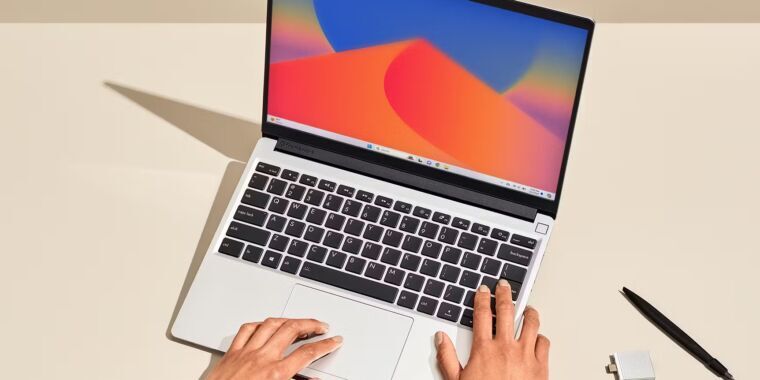Ultra 7 155H with six P-cores, eight E-cores, and eight graphics cores; or an Ultra 7 165H with the same number of cores but marginally higher clock speeds.
WTF is Intel smoking with these naming schemes I can’t even understand what this means. Thank fuck AMD is an option.
Yeah because AMD has such great naming schemes…
I can’t even understand what this means
I think that’s the intent, and they fucking nailed it.
And AMD is following along with the stupid naming scheme in the next generation.
It’s the intent, like “high-end” car models, so you can’t distinguish them by features or age.
The number behind Ultra is pretty much the same as with the i$x scheme. 3 is entry, 5 is mid range, 7 is high end, 9 is bad decision making.
The number after that kind of works like before. So higher number means more better. Probably with an extension for coming generation. Remember, the first i5s had 4 digit names as well, the fourth digit was prepended to indicate generations.
Thing is, there’s no really good naming scheme, because there are so many possible variants/dimensions. Base clock, turbo clock, TDP, P core count, E core count, PCIe lanes, socket, generation ,… How would you encode that in a readable name?
just concat: intel i7 11g4p8e128l420c520b
11 gen 4 pcore 8 ecore 128 lane 4.20ghz clock base 5.20ghz clock boost
letter between for readable. maybe not add lane if not change for same number of pcore and ecore
gskill do similar thing: F5-5200J3636C16GX2-FX5
5200 mhz unbuffered dimm 36-36-36 timing 1.20v 16g per module dual channel 2 module in kit
see here: https://www.gskill.com/faq/1502180912/DRAM-Memory
edit: also can put architecture with letter to indicate refresh, add suffix for apu and maybe tdp
can maybe use some letter for number: not that many different core number, make a=1pcore, b=2pcore, c=3pcore, … more than 26 pcore unlikely ever in consumer cpu. same for ecore maybe
You really think, that is more readable?
This is where I’d put my Framework laptop
IF THEYD SELL ME ONE
I know right. Instead of lowering the price. Maybe sell it outside us
The Core Ultra chips, like the Ryzen 7040-series chips, also include a neural processing unit (NPU) that can be used to accelerate some AI workloads. But both NPUs fall far short of the performance required for Recall and other locally accelerated AI features coming to Windows 11 24H2 later this year;
Why even waste the fucking space on the die then?
NPUs existed before recall and have other uses apart from that.
This is all well and good, but what I really want is a Framework 2-in-1. That would be drool worthy.
Do you mean the tablet/PC combos?
Yeah, like the Surface Pro. Basically a tablet PC with a keyboard/trackpad attachment.
I really hope they start shipping to Denmark soon. We’re such a tiny market we often get ignored or forgotten.
I was on the Framework wait-list for over a year, but bailed because they didn’t kick this out in time.
Fuck yeah was going to order a new one soon
This is the best summary I could come up with:
Prices start at $899 for a pre-built or DIY model (before you add RAM, storage, an OS, or a USB-C charger), or $449 for a motherboard that can be used to upgrade an existing system.
But both NPUs fall far short of the performance required for Recall and other locally accelerated AI features coming to Windows 11 24H2 later this year; Framework’s blog post doesn’t mention the NPU.
It has a matte finish and a 120 Hz refresh rate, and it costs $130 more than the standard display or $269 when bought on its own to upgrade an existing laptop.
All of Microsoft’s Surface devices released within the last few years have also used rounded corners, and I haven’t found that it affects functionality at all.
Other odds and ends include multicolor USB-C Expansion Cards that are color-matched to the colorful bezel options, an English International keyboard for Linux users with a “super” key in the place of the Windows logo, and a new 9.2-megapixel front-facing webcam module with low-noise microphones (Framework says this module doesn’t work at its native resolution but instead groups four pixels together into one to deliver better performance at 1080p).
Framework has also added new configuration options for the Ryzen 7040 version of the Laptop 13 that include the new display and has lowered prices on those AMD configs and on "our remaining inventory of 13th-gen Intel Core systems.
The original article contains 740 words, the summary contains 234 words. Saved 68%. I’m a bot and I’m open source!
deleted by creator
To each their own. I’ve personally got a 14” MBP (which is physically the same size as my 13” was, they just have smaller bezels) and work provides me a 16” MBP. The 16 is unwieldy, massive, heavy, too large on my lap, barely fits in my laptop bag, and is a general pain to lug around. Every time I use it I’m reminded of how much I’m glad I got the 14”instead. I feel like the 16 is the worst of both worlds. It’s too big to truly be a portable, machine, but too small to do real work on. Sometimes I’ll think “I wish I had more screen real estate” on the 14, but I do on the 16 as well, so it doesn’t really solve the issue while also being large and heavy.
In short, it depends on what you like, and what you need to do. Being an ultraportable is a big plus and there are monitors in most places I need more space anyway.
13 is a good “on call”/travel size. It’s not big enough to do serious work on but in a pinch it’s definitely big enough to get something done. It’s more comfortable on a flight, you can toss it a fairly small bag and take it with you. It’s lighter but can still manage a reasonable size keyboard. And when I get to my house or my job I’m plugging into external mouse and keyboard anyway.
It’s not for everyone but my 13-in motherboard died about 2 months ago and I am definitely in the market. Now if I can just actually buy one of these we’ll see.
The actual screen volume is around that of a 14" 16:9 if that makes a difference
Everyone is different. My favorite computer is my 11" netbook because despite being slow it fits in any bag, fits in my side table, so light I can easily carry with one hand and not put undue pressure on my wrists, I can use most books as a lap desk, and I don’t have to clear off as much space on the table (I have two kids so it’s never clear).










